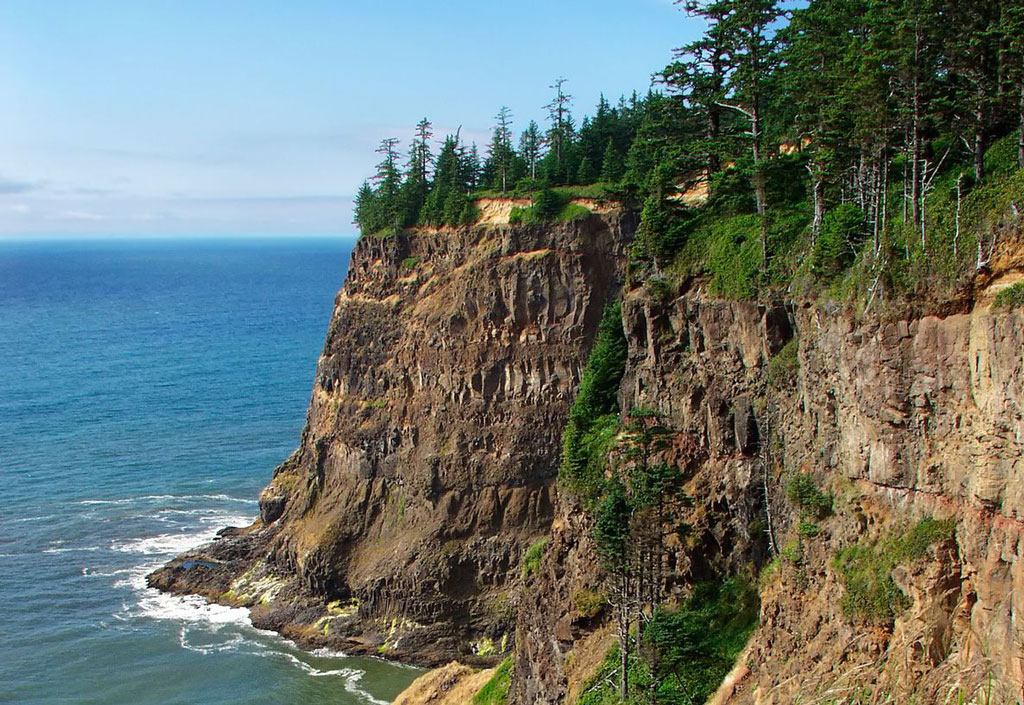
The coastline at Cape Meares Scenic Viewpoint along the Three Capes Scenic Loop. Photo © Royce Bair/123rf.

Three Capes Scenic Loop
With stunning views, picnic tables, a newly restored lighthouse, and a uniquely contorted tree a short walk from the parking lot, Cape Meares State Scenic Viewpoint is the most effortless site to visit on the Three Capes Loop. It was named for English navigator John Meares, who mapped many points along this coast in a 1788 voyage. The famed Octopus Tree is less than 0.25 mile up a forested hill. The tentacle-like extensions of this Sitka spruce have also been compared to candelabra arms.The 45-foot diameter of its base supports five-foot-thick trunks, each of which by itself is large enough to be a single tree. Scientists have propounded several theories for the cause of its unusual shape, including everything from wind and weather to insects damaging the spruce when it was young. A Native American legend about the spruce contends that it was shaped this way so that the branches could hold the canoes of a chief’s dead family. Supposedly, the bodies were buried near the tree. This was a traditional practice among the tribes of the area, who referred to species formed thusly as “council trees.”
Beyond the tree you can look south at Oceanside and Three Arch Rocks Wildlife Refuge. The sweep of Pacific shore and offshore monoliths makes a fitting beginning (or finale, if you’re driving from the south) to your sojourn along the Three Capes Loop, but be sure also to stroll the short paved trail down to the lighthouse, which begins at the parking lot and provides dramatic views of an offshore wildlife refuge, Cape Meares Rocks. Bring binoculars to see tufted puffins, pelagic cormorants, seals, and sea lions. The landward portion of the refuge protects rare old-growth evergreens.
The restored interior of Cape Meares Lighthouse (503/842-2244, 11am-4pm daily Apr.-Oct., free) was built in 1890. This beacon was replaced as a functioning light in 1963 by the automated facility behind it, and it now houses a gift shop. A free tour is occasionally offered by volunteers who might tell you about how the lighthouse was built here by mistake and perhaps offer a peek into the prismatic Fresnel lenses.